
It was the year 1989 and we had an impressive visitor from India. The handout for his talk, spoke about the need for action. The speaker was none other than Dr. Parameshwara Rao. Dr. Rao had a simple yet powerful message. He said – if we don’t do anything, by year 2000, every second illiterate in the world will be an Indian! This stirred up a bunch of us and we felt something needed to be done. This led to the formation of ILP in 1990, registered as a non-profit in Chicago, United States. As a first step, we decided to support Dr. Rao’s own organization BCT. Supporting BCT, gave ILP the right background and experience to support many literacy and education projects across India.

ILP Education project: Key aspects
 By mid 90’s ILP was supporting projects in Assam, Bihar, Maharashtra, Delhi, Karnataka, Andhra Pradesh and Tamil Nadu. There was a lot to be learnt to support the projects effectively. The ‘ILP Project’ typically constituted getting a community interested in education, and ensuring a Govt school is present for children to attend. This is followed with a drive to enroll children in school, ensure their continued attendance, and make learning happen. This is basically the classic Access, Enrollment, Retention and Learning aspect of imparting education to children. To this date, this has been the main-stream of an ILP project.
By mid 90’s ILP was supporting projects in Assam, Bihar, Maharashtra, Delhi, Karnataka, Andhra Pradesh and Tamil Nadu. There was a lot to be learnt to support the projects effectively. The ‘ILP Project’ typically constituted getting a community interested in education, and ensuring a Govt school is present for children to attend. This is followed with a drive to enroll children in school, ensure their continued attendance, and make learning happen. This is basically the classic Access, Enrollment, Retention and Learning aspect of imparting education to children. To this date, this has been the main-stream of an ILP project.
ILP Partnership model
The early days involved choosing an NGO (Non-Governmental Organization, a term for a non-profit organization) in the area of the project, funding and 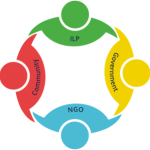 monitoring them to implement the project. This rapidly evolved to creating a ‘ILP Partnership model’ which involved ILP, the NGO, the local Government and the Community. In this model ILP served as the key coordinator and funder of the project with the NGO providing the knowledge, expertise, and man-power pertinent to the local conditions. The local Government blessed the project and provided crucial financial support for the project. In most ILP Projects, the Government provides as much as 97% of the funds through its various schemes. The Community had and continues to have the most important role of supporting and fostering education in the schools and their locality.
monitoring them to implement the project. This rapidly evolved to creating a ‘ILP Partnership model’ which involved ILP, the NGO, the local Government and the Community. In this model ILP served as the key coordinator and funder of the project with the NGO providing the knowledge, expertise, and man-power pertinent to the local conditions. The local Government blessed the project and provided crucial financial support for the project. In most ILP Projects, the Government provides as much as 97% of the funds through its various schemes. The Community had and continues to have the most important role of supporting and fostering education in the schools and their locality.
The partnership model was well solidified by year 2000. By 2000, ILP also formally established its India office in Bangalore. Needless to say, this vastly strengthened ILP’s ability to run its operations.
ILP’s Mass literacy campaign
The decade spanning from 2000 to 2010 saw great increase in the number and scale of ILP projects. ILP continued it quest to reach remote rural areas of India with low literacy rates. Besides reaching several localities across many states of India, ILP’s desire to vastly scale its education projects was fulfilled first through the Karuna Trust project in Karnataka. The project targeted the Yelandur taluk/block of Chamarajanagar district, one of the most backward districts of Karnataka. The plan was to work across the 40 villages and 7 tribal hamlets of the block over 4 years to raise its literacy level from low 40’s to high 90% literacy rate. ILP found a great ally in Dr. Sudarshan of the Karuna trust project. He had a committed staff with a great sense of affiliation with the organization and the community. ILP along with its partners pioneered a great program which saw community sensitization and mobilization, capacity building and strengthening across various institutions of the school and the community. Targeting a population of about 30,000 people the program saw a dramatic increase inincrease the in the literacy rates (low 40s to 90%) and enrollment of children in school, starting their journey for lifelong learning. The entire program was achieved at a low cost of $3 per person per year by leveraging Government Govt funds. This project that spanned 2003-2007 laid the foundation for many more large-scale projects to come.
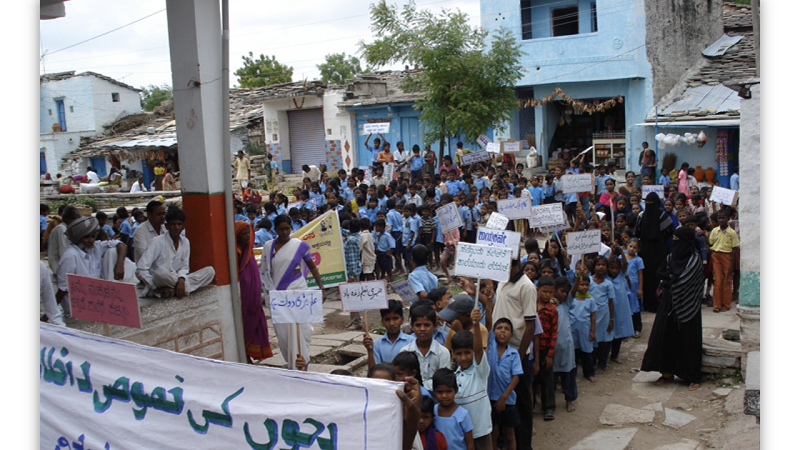
ILP MDLS program
In 2011 ILP made a special beginning to make learning a joy and a voyage of discovery. It pioneered the MDLS (Multi-Dimensional Learning Space) program. The program actively recognizes that children learn in multiple ways. They being auditory, visual, experiential and more. It also recognizes that learning is a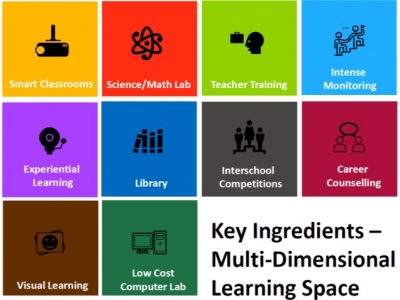 continuous process that doesn’t start and end in school. It needs to go beyond a few subjects and there needs to be a balance between the curriculum and extracurricular activities. The program started outside of a few schools in the Gubbi Gubi taluk of Karnataka. The program was so popular with the children that they would spend long hours after school at the MDLS center. The MDLS center includes a well-organized library, smart classrooms with a laptop and projector that presented well curated material from the internet, science labs and kits, low cost computer labs, play material and plenty of opportunity for peer to peer learning. The MDLS center invariably instituted several inter-school science, painting and other competitions that helped showcaseshow case the skills and achievement of the students. By 2015, the MDLS program become so popular that it got invitation and funding to institute the program across the entire GubbiGubi taluk for close to 180 schools.
continuous process that doesn’t start and end in school. It needs to go beyond a few subjects and there needs to be a balance between the curriculum and extracurricular activities. The program started outside of a few schools in the Gubbi Gubi taluk of Karnataka. The program was so popular with the children that they would spend long hours after school at the MDLS center. The MDLS center includes a well-organized library, smart classrooms with a laptop and projector that presented well curated material from the internet, science labs and kits, low cost computer labs, play material and plenty of opportunity for peer to peer learning. The MDLS center invariably instituted several inter-school science, painting and other competitions that helped showcaseshow case the skills and achievement of the students. By 2015, the MDLS program become so popular that it got invitation and funding to institute the program across the entire GubbiGubi taluk for close to 180 schools.
The period from 2015 thru 2019 saw great strides being made by ILP including noteworthy achievements in the ILP’s education projects and MLDS, along with the official launch of the CSM (Career Counselling, Scholarship and Mentoring) program.
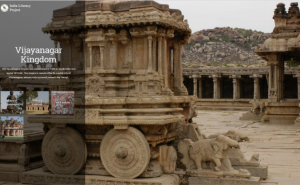 In this period the MDLS program expanded in and beyond Karnataka to Tamil Nadu, Andhra Pradesh and Jharkhand. The program broke new ground in teaching social sciences (History and Geography) in novel ways using Google earth. Children learn by interactively exploring maps, monuments and can experience a 3-dimensional tour of important places. Appropriate material was created for several grades in several languages. This style of teaching social sciences has created many “Wow” moments, for children across the schools.
In this period the MDLS program expanded in and beyond Karnataka to Tamil Nadu, Andhra Pradesh and Jharkhand. The program broke new ground in teaching social sciences (History and Geography) in novel ways using Google earth. Children learn by interactively exploring maps, monuments and can experience a 3-dimensional tour of important places. Appropriate material was created for several grades in several languages. This style of teaching social sciences has created many “Wow” moments, for children across the schools.
In 2018, highly impressed by ILP’s model pre-school program the district official of the Kalburgi district of Karnataka, requested ILP’s help to launch the program across all the 3000 schools of the district. This is bound to bring the best practices of ILP to all the pre-schools of the district, setting the children off to a wonderful start.
ILP CSM Program
Initially conceived in 2016 the CSM (Career Counselling, Scholarship and Mentoring) program, the program has made great strides in bridging students from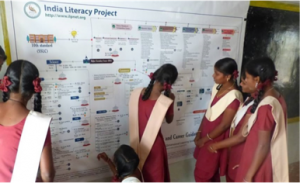 school to college and beyond. Students put in a lot of hard work to finish school, but they appear lost when trying to forge a path ahead. The disadvantaged students have neither role models nor mentors to guide them. ILP’s program creates Career counselling charts, workshops, Individual counselling to help students identify suitable careers. Scholarships provide bright but poor students much needed financial support. Mentoring provides students much needed emotional support and encouragement besides academic help. Impressed by ILP’s CSM program, the Karnataka government in 2019 has recommended the use of ILP’s career chart and books in all its schools, across the entire state.
school to college and beyond. Students put in a lot of hard work to finish school, but they appear lost when trying to forge a path ahead. The disadvantaged students have neither role models nor mentors to guide them. ILP’s program creates Career counselling charts, workshops, Individual counselling to help students identify suitable careers. Scholarships provide bright but poor students much needed financial support. Mentoring provides students much needed emotional support and encouragement besides academic help. Impressed by ILP’s CSM program, the Karnataka government in 2019 has recommended the use of ILP’s career chart and books in all its schools, across the entire state.
Over the years, ILP has created a credible learning path from childhood to college. Its Education projects, numbering more than 120 since ILP’s inception, sends disadvantaged children to school. This means children starting from pre-schools prosper through primary school, middle school and high school. The MDLS program makes learning a joy and allows children to learn in ways that is best suited to them. The CSM program bridges students from school to college and beyond. Past 2020, ILP hopes to reach more than a million children annually through its programs. Along with other institutions and enlightened citizens ILP hopes to reach the goal of a 100% literate India, where every child will go to school, learn and have a chance to fulfil its highest potential.